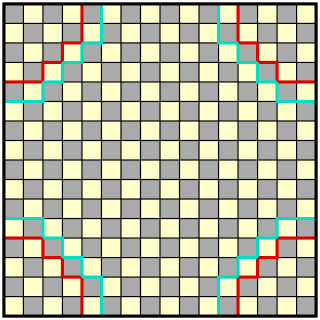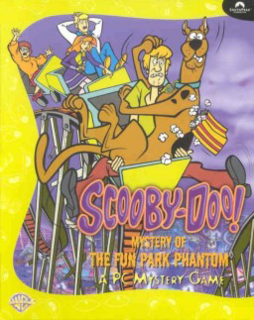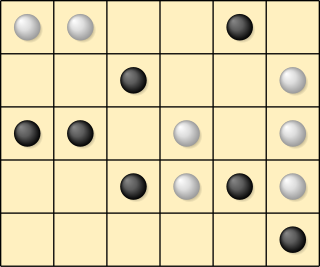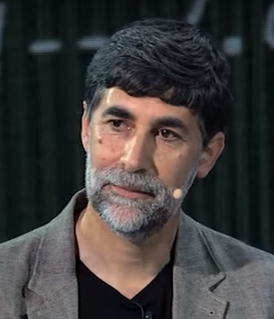Related Research Articles

Hex is a two player abstract strategy board game in which players attempt to connect opposite sides of a hexagonal board. Hex was invented by mathematician and poet Piet Hein in 1942 and independently by John Nash in 1948.

Draughts or checkers is a group of strategy board games for two players which involve diagonal moves of uniform game pieces and mandatory captures by jumping over opponent pieces. Draughts developed from alquerque. The name 'draughts' derives from the verb to draw or to move, whereas 'checkers' derives from the checkered board which the game is played on.

Halma is a strategy board game invented in 1883 or 1884 by George Howard Monks, an American thoracic surgeon at Harvard Medical School. His inspiration was the English game Hoppity which was devised in 1854.

Connect Four is a two-player connection board game, in which the players choose a color and then take turns dropping colored discs into a seven-column, six-row vertically suspended grid. The pieces fall straight down, occupying the lowest available space within the column. The objective of the game is to be the first to form a horizontal, vertical, or diagonal line of four of one's own discs. Connect Four is a solved game. The first player can always win by playing the right moves.

3D tic-tac-toe, also known by the trade name Qubic, is an abstract strategy board game, generally for two players. It is similar in concept to traditional tic-tac-toe but is played in a cubical array of cells, usually 4×4×4. Players take turns placing their markers in blank cells in the array. The first player to achieve four of their own markers in a row wins. The winning row can be horizontal, vertical, or diagonal on a single board as in regular tic-tac-toe, or vertically in a column, or a diagonal line through four boards.
Arimaa is a two-player strategy board game that was designed to be playable with a standard chess set and difficult for computers while still being easy to learn and fun to play for humans. It was invented in 2003 by Omar Syed, an Indian-American computer engineer trained in artificial intelligence. Syed was inspired by Garry Kasparov's defeat at the hands of the chess computer Deep Blue to design a new game which could be played with a standard chess set, would be difficult for computers to play well, but would have rules simple enough for his then four-year-old son Aamir to understand.

Scooby Doo! Mystery of the Fun Park Phantom is a 1999 mystery computer game developed by Engineering Animation, Inc. (EAI) and published by SouthPeak Interactive. The game was released for Microsoft Windows and was the first commercial Scooby-Doo game for the Windows operating system. It is intended for young children up to young teens.

Hasami shogi is a variant of shogi. The game has two main variants, and all Hasami variants, unlike other shogi variants, use only one type of piece, and the winning objective is not checkmate. One main variant involves capturing all but one of the opponent's men; the other involves building an unbroken vertical or horizontal chain of five-in-a-row.

PÜNCT is a two-player strategy board game. It is the sixth release in the GIPF project of six abstract strategy games, although it is considered the fifth game in the project. It was released in 2005. PÜNCT won the Games Magazine Best Abstract Strategy game for 2007.

Yoté is a traditional strategy board game of West Africa, where it is a popular gambling game due to its fast pace and surprising turnarounds. A player wins by capturing all opposing pieces. Yoté is related to the game Choko.

Agon is an strategy game invented by Anthony Peacock of London, and first published in 1842. It is a two player game played on a 6×6×6 hexagonal gameboard, and is notable for being the oldest known board game played on a board of hexagonal cells.
Three-player chess is a family of chess variants specially designed for three players. Many variations of three-player chess have been devised. They usually use a non-standard board, for example, a hexagonal or three-sided board that connects the center cells in a special way. The three armies are differentiated usually by color.

Kōnane is a two-player strategy board game from Hawaii. It was invented by the ancient Hawaiian Polynesians. The game is played on a rectangular board. It begins with black and white counters filling the board in an alternating pattern. Players then hop over one another's pieces, capturing them similar to checkers. The first player unable to capture is the loser; their opponent is the winner.

A game is a structured form of play, usually undertaken for entertainment or fun, and sometimes used as an educational tool. Games are distinct from work, which is usually carried out for remuneration, and from art, which is more often an expression of aesthetic or ideological elements. However, the distinction is not clear-cut, and many games are also considered to be work or art.

Zillions of Games is a commercial general game playing system developed by Jeff Mallett and Mark Lefler in 1998. The game rules are specified with S-expressions, Zillions rule language. It was designed to handle mostly abstract strategy board games or puzzles. After parsing the rules of the game, the system's artificial intelligence can automatically play one or more players. It treats puzzles as solitaire games and its AI can be used to solve them.
A connection game is a type of abstract strategy game in which players attempt to complete a specific type of connection with their pieces. This could involve forming a path between two or more goals, completing a closed loop, or connecting all of one's pieces so they are adjacent to each other. Connection games typically have simple rules, but complex strategies. They have minimal components and may be played as board games, computer games, or even paper and pencil games.
This page explains commonly used terms in board games in alphabetical order. For a list of board games, see List of board games. For terms specific to chess, see Glossary of chess. For terms related to chess problems, see Glossary of chess problems.

Francisco José Vico Vela is a scientist and engineer who is full professor of Artificial Intelligence at University of Malaga. As a researcher, Vico is founder and head of the Biomimetics and EdTech Research Groups at University of Malaga, and founder and CEO of the University spin-offs Melomics Media and Digitomica as entrepreneur. His work is mostly known for using evolutionary computation in the field of automated computer composition and industrial design.

Seega is an abstract strategy game that originated in Egypt. It can be played on boards with cells in a 5×5, 7×7 or 9×9 disposition. Other names include Seejeh, Siga and Sidjah.
References
- ↑ Vico, Francisco J. (2007). "Selfo: A class of self-organizing connection games". Technical Report ITI 07-7. Computer Science School, Malaga University. hdl: 10630/7743 .
- ↑ Albarracin, David (2010). "Design and implementation of a strategy for a connection game". Undergraduate Thesis Project. Computer Science School, Malaga University.
- ↑ "Selfo". Zillions Development Corporation. 2009-11-28. Retrieved 2014-06-27.